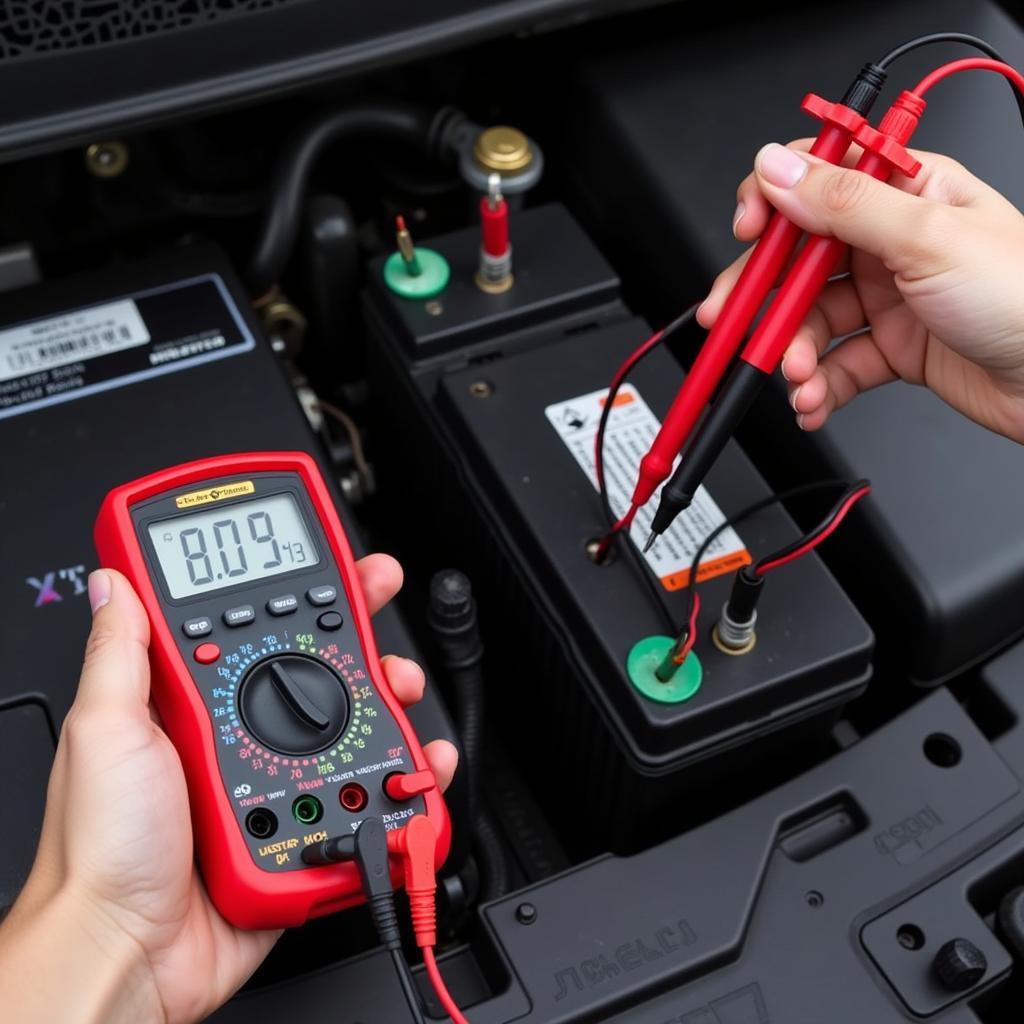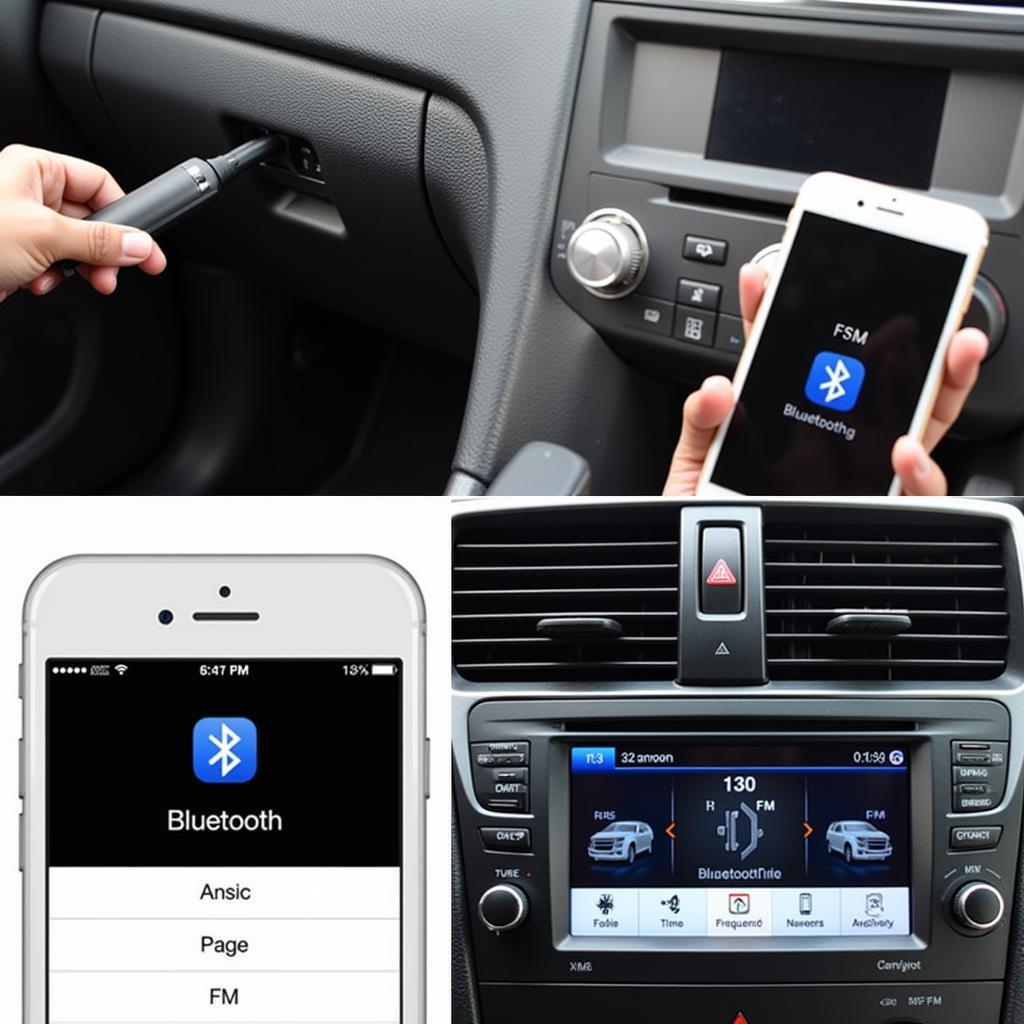A dead car battery can be a frustrating experience, leaving you stranded and needing a jump start. Understanding why your car battery is not working and how to troubleshoot the issue can save you time, money, and a lot of hassle. This comprehensive guide provides in-depth information on diagnosing and resolving car battery problems, from simple checks to more complex solutions. Let’s dive in and get your car back on the road!
Common Reasons Why Your Car Battery Is Not Working
There are several reasons why your car battery might not be working. Some of the most common culprits include:
- Old Age: Like any battery, car batteries have a limited lifespan. Typically, they last between three and five years. Extreme temperatures can shorten this lifespan.
- Corrosion: Battery terminals can corrode over time, preventing proper electrical connection. This often appears as a white, powdery substance around the terminals.
- Parasitic Drain: Even when your car is off, certain electrical components can draw power from the battery, slowly draining it over time. This can include faulty interior lights, a malfunctioning radio, or other electronic devices.
- Leaving Lights On: Accidentally leaving your headlights or interior lights on can quickly drain your car battery.
- Extreme Temperatures: Both extreme heat and cold can negatively impact a car battery’s performance and lifespan.
- Faulty Alternator: The alternator recharges the battery while the engine is running. If the alternator is malfunctioning, it won’t charge the battery properly, leading to a dead battery.
- Loose or Damaged Cables: Loose or damaged battery cables can disrupt the flow of electricity to and from the battery, causing it to malfunction.
Troubleshooting a Dead Car Battery
Before assuming your battery is completely dead, there are a few simple troubleshooting steps you can take:
- Check the Battery Terminals: Inspect the battery terminals for corrosion. If you see a white, powdery substance, clean it off with a wire brush and a mixture of baking soda and water.
- Check the Cables: Ensure the battery cables are securely attached to the terminals. Tighten them if necessary.
- Try Jump Starting: If the car starts after a jump start, it indicates a problem with the battery or the charging system.
- Test the Alternator: After a jump start, if the car dies again shortly after, it suggests a faulty alternator that’s not recharging the battery.
“A simple voltage test can tell you a lot about your battery’s health. If the voltage is below 12.4 volts, it’s time to consider a replacement,” advises John Smith, a certified automotive technician with over 20 years of experience.
How to Prevent Future Battery Issues
Preventing car battery problems is often easier than dealing with a dead battery. Here are some preventative measures:
- Regular Battery Testing: Have your car battery tested at least once a year, especially before the winter or summer months. You can get this done at most auto parts stores.
- Clean Battery Terminals: Regularly clean the battery terminals to prevent corrosion.
- Limit Short Trips: Short trips don’t give the alternator enough time to fully recharge the battery. Try to combine short trips or take longer drives occasionally.
- Turn Off All Lights: Double-check that all lights are turned off before leaving your car.
- Address Parasitic Drains: If you suspect a parasitic drain, consult a mechanic to identify and fix the issue.
“Many modern cars use key fobs with small batteries that can also die. Knowing how to replace these batteries can save you a trip to the dealership,” adds John Smith. You can learn more about battery for jeep key fob and mini car key battery dead on our site.
 Testing Car Battery with Multimeter
Testing Car Battery with Multimeter
When to Replace Your Car Battery
If your car battery is consistently failing, even after troubleshooting and preventative measures, it’s time for a replacement. Signs you need a new battery include:
- Slow Engine Crank: The engine cranks slowly or struggles to start.
- Dim Headlights: Headlights appear dimmer than usual, especially when idling.
- Clicking Sound When Starting: A rapid clicking sound when you turn the key indicates a low battery.
- Battery Warning Light: The battery warning light on your dashboard illuminates.
- Swollen Battery Case: A swollen or cracked battery case is a sign of damage and requires immediate replacement.
- Old Age: If your battery is more than three years old, consider having it tested and potentially replaced.
“Ignoring a failing battery can lead to being stranded and even damage to other car components. Don’t wait until it’s too late – replace your battery proactively,” reminds John Smith. For more insights, refer to our guides on battery symbol car meaning and 2015 jeep cherokee battery issues. Also, learn how to replace your chevrolet equinox key fob battery replacement to avoid unexpected lockouts.
Conclusion
A car battery is not working can be a nuisance, but understanding the common causes and troubleshooting steps can help you address the problem quickly and efficiently. By following the preventative measures outlined in this guide, you can extend the life of your car battery and avoid unexpected breakdowns. Remember to have your battery tested regularly, especially if it’s nearing the end of its expected lifespan. Don’t wait until your car battery completely fails – taking proactive steps can save you time, money, and frustration in the long run.


